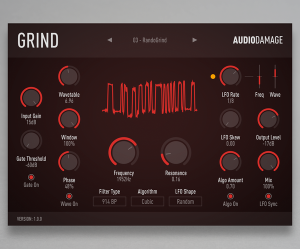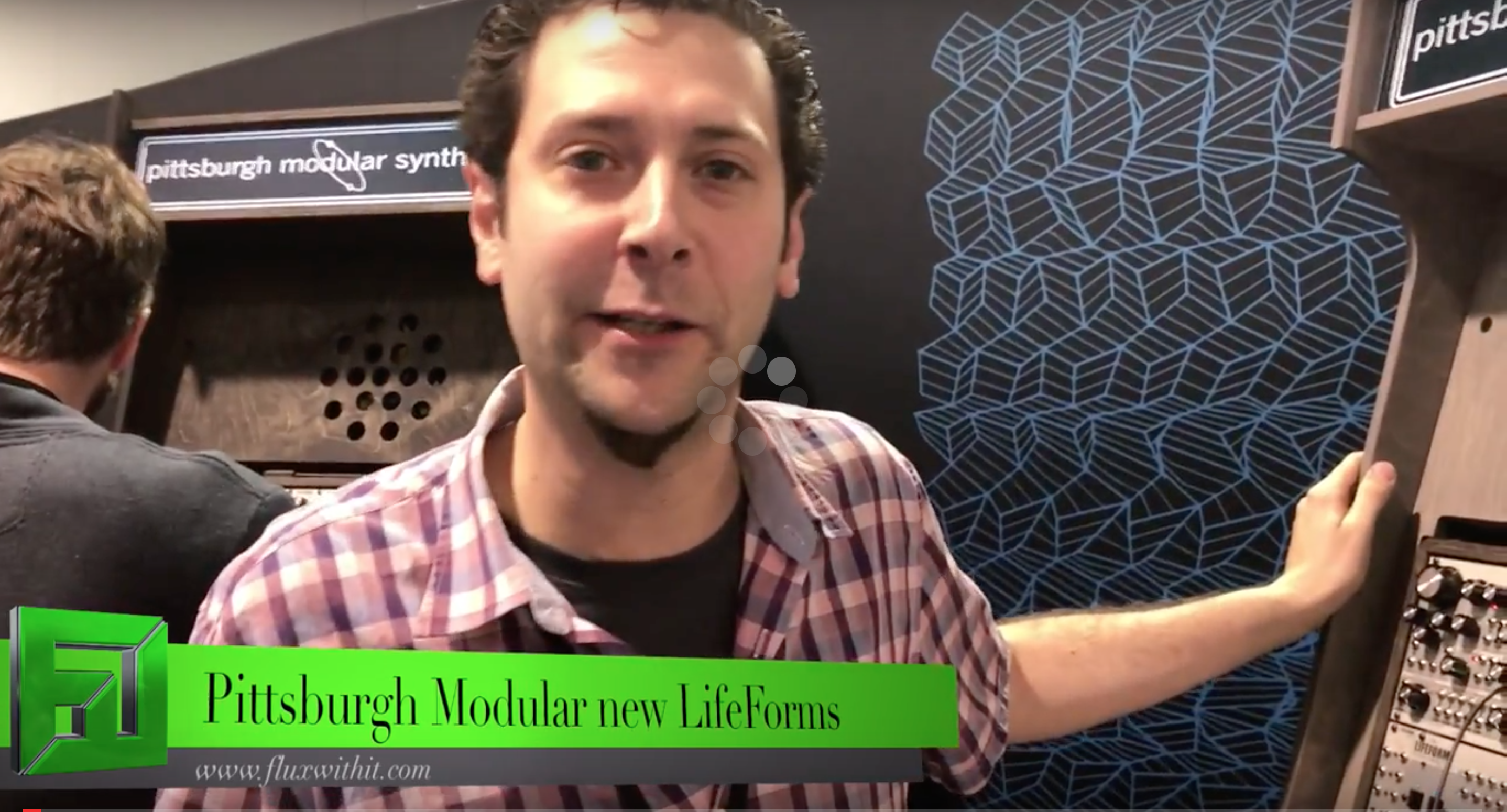This is a chilled out show where I hang out in the lab and discuss topics live.
Tag Archives: flux
The SynthSummitShow episode 21 Chris Meyer of Learning modular (previously of sequential circuits etc)
The SynthSummitShow episode 20: Taiho Yamada (MOK) + giveaway
The SynthSummitShow episode 20: Taiho Yamada
Mr Yamada has an extensive history in the synthesizer world dating back to early days of the Alesis Rompler synths such as the Quadrasynth and has been instrumental in quite a few key synthesizers of our time. From the Alesis Andromeda, Ion, and Fusion to the M-Audio Venom Taiho Yamada’s career has been steeped in synth gold. Now striking out on his own with company Media OverKill (MOK) Taiho looks to set the bar with a new form of patent pending synthesis in WaveRazor. Join this show and learn details on how you could win a copy of both WaveForm and WaveRazor! It was a great interview filled with lots of 90’s and 2000’s synth history, very much worth a listen!
Audio Damage freshens its line up with new plugins!
Audio Damage is Has released 3 new plug in VSTs available directly from their site. New versions of the Delay Plug in “Dubstation 2″, Reverb Plug in ” EOS 2 ” and the all new waveshaping distortion “Grind” are now available.
EOS 2 consists of four high-quality custom-designed reverb algorithms, made with the modern production environment in mind. Three different plate simulators and Audio Damage’s own Superhall algorithm give you a broad palette of reverb, and the easy-to-understand interface makes adjusting the algorithms to suit your track incredibly simple.

From the Audio damage site:
The original dub delay plugin and still the best! Dubstation 2 takes our most popular product and adds a whole raft of new features, including a dual mode for separate control over the left and right delay times, ping-pong, a new feedback saturation algorithm, and an LFO. Along with an all-new procedural and Retina-friendly user interface and (FINALLY!) ProTools compatibility, this represents a major leap forward for one of our signature products.
All those bells and whistles aside, the heart of Dubstation is our painstaking bucket-brigade delay model. Often imitated, but never duplicated, Dubstation has been the go-to plugin for that sound for over a decade, used in thousands of commercial productions, and with good reason. With the addition of the LFO and saturation controls, Dubstation has moved in to the realm of tape delay emulation as well, and is a sonic Swiss Army knife for delay. 
from the AD site:
A true powerhouse of audio warfare, Grind puts the “damage” in Audio Damage. From subtle tube-style saturation to full-on mangled wavetable distortion, Grind is a Swiss Army Knife of sound design.
Grind consists of three main blocks: wavetable lookup, in to algorithmic saturation/distortion/, and finally to a multi-mode filter. The wavetable module uses the amplitude of the incoming signal to replace the sample with one from 15 different linearly-interpolated wavetables, chosen for their mangling potential. Window size and phase controls provide further tone-shaping possibilities.
The next stop is the algorithm module, with eleven different distortion and saturation algorithms, from simple soft-knee saturation on up to full on sine warping.
After this, the signal passes through a multi-mode filter stage, with eleven different filter models to choose from, including “vintage digital” versions from the early days of plugin development, on up to our modern analog-modeled MS20-style lowpass and highpass synth filters. A tempo-synced LFO provides motion for the filter frequency, and a final stage of soft clipping and DC filtering tames the output.
Make no mistake: this is not a subtle, polite tool. With careful tuning of the provided presets, it can be tamed to normal filtering and saturation duties, but on the whole, it is a noisy, snorting beast of a plug-in, and is happiest with Full Metal audio destruction. 
OK enough with the AD copy. I have had some time with all three of these (I even created a group of presets for Dubstation 2). I can say these are a really nice step forward in the Audio Damage line up. The UI is really impoved on these (Grind and EOS2 have some killer front end graphics to help understand whats going on).
Grind really impressed me in its filter types as well as how the distortions can take a plain sound and add a ton of movement and character. Similar to the Eurorack module Shapes also from Audio Damage, Grind lets you sequence lookup tables and waveshaping wavetables… very freaking cool.
tempo syncing the waveshaping and filter frequency changes is a joy.
Dubstation 2 is a very straight foward BBD sounding delay that will let you just easily get that dub delay you are after without a cluttered interface.
EOS 2 is just a joy to look at and hear. I’ve been using this to create gorgeous synth pads and basically create environments for my instruments to breathe in.
The SynthSummitShow episode 18: John Bowen synth designs
This episode I was fortunate to have John Bowen on the show. A staple in the synthesizer community for roughly 40 years, John has been instrumental in many of the legendary synths of our time. Join us as we walk through a piece of synth history and cap it off with a discussion of his amazing Solaris synthesizer.
for more info check out Johnbowen.com
The SynthSummitShow episode 17: Hyve Touch Synthesizer’s Skot Weidmann
Hex Inverter Mutant Rim shot, ZNO, Red Dragon Eurorack modules at NAMM ’17
Hex Inverter the mind behind the Mutant Drums series of Eurorack Modules returns to NAMM 2017 with a new filter, Rim shot and wild noise source oscillator. Winston from Balcones Whiskey steps in to assist with this coverage so big thanks to Winston and the crew at Balcones whiskey.

New Synthesizer Modules from Hex inverter at Namm 2017!
Pittsburgh Modular Double Helix VCO and new Lifeforms modules NAMM ’17

Designed to be the nucleus of a synthesizer, the Double Helix Oscillator is a modular waveform generator like no other. A set of beefy, analog oscillators paired with voltage controlled shape contouring, deep modulation and a performance-ready voltage controlled modulation matrix create a dynamic, analog waveform playground.
At the core of the Double Helix are two, wide-range precision oscillators. The primary oscillator includes a full complement of waveforms and multiple modulation options. The secondary oscillator offers a more focused set of waves and frequency modulation. Both oscillators reach deep into LFO range and can be used as voltage-controlled modulation sources.
The contour section of the Double Helix Oscillator features a highly tuned wavefolder paired with an exclusive dynamic impulse low pass gate. The contour signal chain starts with a two-channel mixer. This allows multiple waveforms or multiple oscillators to be combined before passing though the contour section. The first half of the contour section is a voltage-controlled, 6-stage wavefolder used to add odd harmonics to the incoming waveform. The timbre and timbre CV controls set the density and amplitude of the folds. When processing a sine wave, the wavefolder creates a spectral change from zero harmonics to square, with an infinite harmonic series.
The second half of the contour section is a dynamic impulse low pass gate. The effect of the low pass gate is similar to pairing a low pass filter and VCA together. As the dynamics control is opened, the filter adds harmonics and the VCA increases the amplitude of the waveform. As the dynamics control is closed, the filter removes harmonics and the VCA decreases the amplitude of the waveform. This pairing mimics how sound behaves in the real world creating a more naturally tonal response. The impulse input adds the ability to strike or ping the low pass gate circuit creating a very organic, percussive sound. The decay time of the impulse input is set by the dynamics response control allowing the strike to be tuned to a specific musical context.
The modulation section includes an LFO offering simultaneous sine, square, and random waveforms. A noise source is also available for audio or modulation use.
A pair of voltage-controlled routers manage all the CV inputs creating a dual, voltage controlled modulation matrix perfect for complex signal paths, experimentation, and live performance. The matrix consists of two voltage-controlled amplifiers designed to control the modulation amount inputs that can be routed to any of the Double Helix CV inputs. Each of the CV inputs can be switched to channel a, bypass, or channel b and mixed with a dedicated CV input.
- Panel size: 28hp
- Depth: 37mm
- Power Usage: +12v 223mA, -12v 205mA
- Does not require +5v

